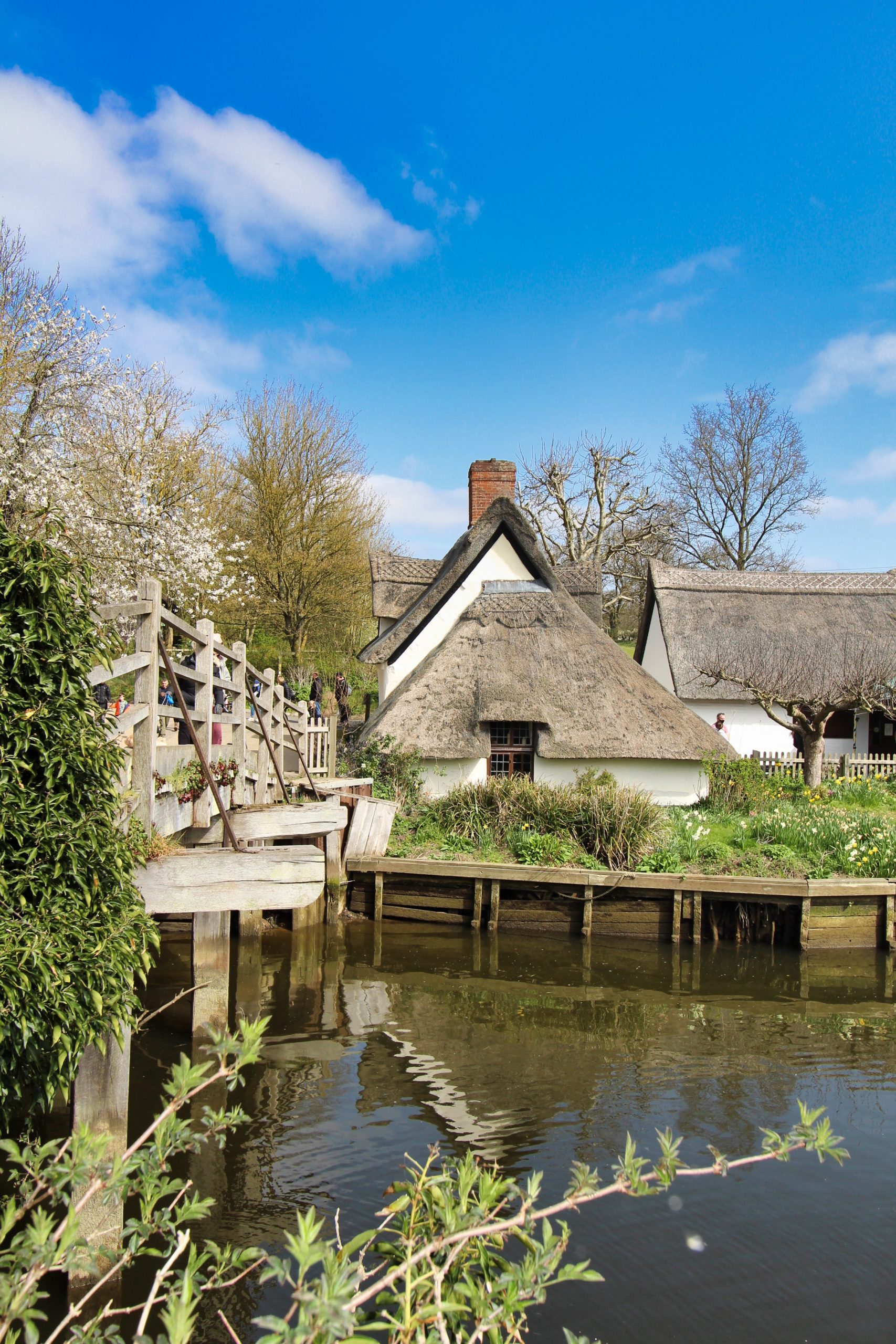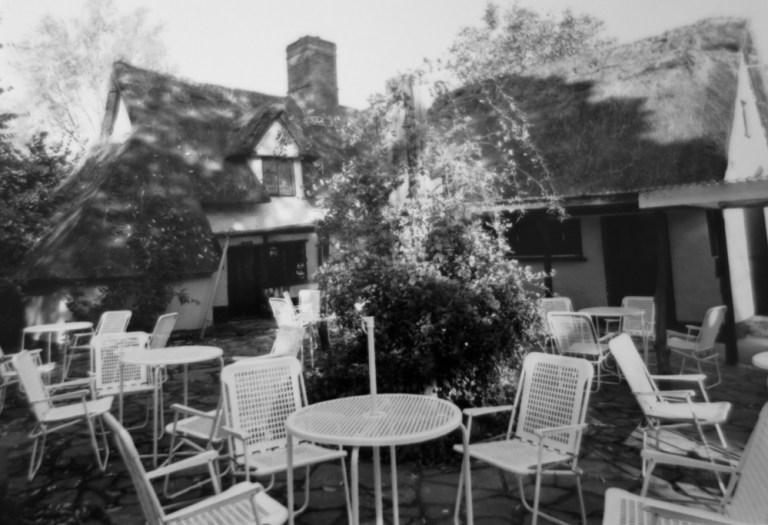Bridge Cottage
Bridge Cottage was depicted in many of John Constables paintings of Flatford, and dates from around 1700, however no doubt there were other buildings on the site prior to this.
By the 19th century, it was converted into two dwellings, each family lived with a small parlous with access to a single bedroom in the attic, accessed in one by a twisting staircase, and the other a loft ladder.
- 21
- Bridge Cottage, Flatford
Details
Family life in these two cottages must have been interesting given the working life of the mill and the river. One such family THE CLARKS moved into one of these single bed roomed cottages around 1880 (so well after Constable) and lived there for about 12 years. They had 12 children, 8 of which were born in Bridge Cottage, the older 3 born in Bradfield where they lived before moving to East Bergholt, living at the Hay Barn before moving into Bridge Cottage around 1880, and the last son born at Burnt Oak where they moved to in 1892
By 1890, they were living in Bridge cottage with all 11 children plus a 7 year old child lodger. Isaac Clarke, (born in Lawford in 1845), was at this time a Flour Miller’s Carter, and his wife Emmeline (nee Dorman whom he married in 1872 at Bradfield), Emmeline was a dressmaker.
Isaac died in 1910 aged 64 and is buried in East Bergholt Church. By 1911 Emmeline was understood to be living with her 2 youngest sons in a 6-roomed house at Burnt Oak, where she lived till 1917 and died aged 67 at her daughters Priscilla house in Chesterton, Cambridge.
The children all lead interesting lives as well (in age order).
- Frederick Isaac, after leaving Burnt Oak school he enlisted with the Royal Artillery in Colchester as a Gunner and was based in Woolwich in 1891. By 1906 he was married to Alice Horsley and now a Sergeant joined the Royal Field Artillery special Reserve. He served 6 years in India, 5 months in South Aftrica and was awarded a good conduct medal in 1909. He was discharged in 1920 and died in Sheering, Essex in 1953
- Albert Joseph, the most unruly of the children but he went on to be a butler in Fulham, London in the household of Edward Burner-Jones, with his wife Georgiana who was upper parlour maid in the same household.
- Prescilla Emmeline. Married in Cambridge in 1900 to William Soloman Matthews, a college ‘Gyp’ and hall superintendent. They lived in a 7 bedroom house at Chesterton and by 1911 she had 5 children and a general live-in servent. She died in 1941, aged 64
- William Felix, became better known as Felix. He won an attendance prize at school in 1886 so joined the Navy in 1895, signing on for 12 years. In 1901 he was AB ‘crew’ on HMS Edinburgh, tender of HMS Wildfire, Battleship 2nd class, Sheerness Harbour. Felix left the Navy in 1908. By 1911 he was living in Paddington with his wife Emily and their 2 children, working as a porter for the post office. Felix was lost in action 8th August 1915 whilst serving as an Able Seaman aboard HMS India, torpedoed by German submarine near Helligvaer.
- Robert Ralph, known later as Ralph. Won a conduct prize in 1886. Married Jane Drane of White Colne in 1901, and became a labourer in a flour mill in North West Battersea.
- Beatrice Maude. Very little known about Beatrice sadly
- Alice Amelia. By 1901 she became house maid at North End House, Rottingdean, Sussex, home of Georgiana Burne-Jones. (Interestingly working alongside a Annie Folkark, also from East Bergholt)
- Mary Ann – Became a domestic servant to Charlotte Jacob, The Street, East Bergholt. Married a William George Smith, an artesian well engineer in 1910 at East Bergholt. By 1911 they lived at Lower Haye, Fingringhoe with their daughter Ivy and son Charles William.
- ary Ann died in 1977 in Kelowna British Columbia, aged 92
- Florence Georgina, sadly died at the age of 2
- Frank Charles. By 1911 was working at the Xylonite factory. During WWI he was wounded in the thigh and caught malaria whilst serving in the 3rd Essex Regiment. He was discharged in 1920 with a disablement pension of 8 shillings a week.
- Henry Arthur – nothing known of Henry after he let school in 1905
- Edward Maurice, the 12th and last child. He served in WWI in the 11th Essex Regiment and died of his wounds in 1916.He is buried in St Sever Cemetery, Rouen B15.52 the same cemetery as Henry Goodchild who had lived in the other part of Bridge Cottage C1880.
By 1985 the National Trust bought Bridge Cottage which then became a tea room, and by 1990 became a permanent exhibition that you can see today.
With thanks to Lyn Matthews for sharing the Clarke family story and Tamisin, Paul and Simon at Flatfordandconstable.org.
more detailed history can be found on the BRIDGE COTTAGE LISTED BUILDING page
- 21
- Bridge Cottage, Flatford



